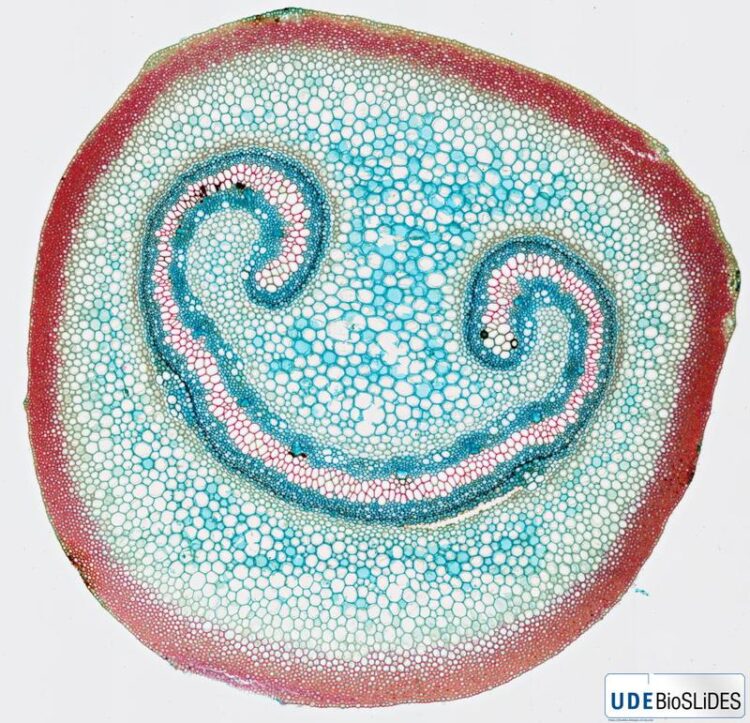Online Microscopy Platform: See-through for Everyone!

Cross section through the petiole of a royal fern in 20x magnification. The diameter is about 3 mm.
https://bioslides.biologie.uni-due.de
Fix the slide, adjust, start with the lowest magnification and then focus through the specimen: This routine is particularly familiar to biology students from microscopy classes. Now, the process also works digitally. More than 200 specimens of plants, animals and microorganisms can be viewed in detail online – without a microscope, free of charge and accessible to everyone. A biologist at the University of Duisburg-Essen (UDE) is making this possible with his project UDE BioSLiDES.
“During the pandemic, we were looking for a way to conduct our faculty’s microscopy courses online. The experience we gained was the starting point for UDE BioSLiDES,” says Dr. Michael Kloster from the UDE Phycology (Algae Science) working group, who is responsible for the project.
Water flea, strawberry mint, diatoms, flat-leaved vanilla: Almost 80 species can currently be found in the unique platform for virtual digital microscopy, with more to follow. One can focus through the high-resolution specimens just like on a microscope, in order to see details in sharp focus that are located in different layers. Additional information about the specimens provides biological background. Downloading is also no problem, as UDE BioSLiDES makes its digital preparations available as an Open Educational Resource – a total of over 800 GB of image data. Access as well as further use is free of charge. “The fact that there are so many specimens in the database that can be handled in a realistic way and are free to use is, to the best of our knowledge, unique in the world,” explains the biologist.
The service, which has just been launched, is intended for education at schools and universities worldwide, with all its contents available in both German and English. Anyone twelve years of age or older can access information about the selected organism, its anatomy, and the preparation and the microscope optics used. It all works right in the browser, without the need for an app or an add-on program.
Editor: Birte Vierjahn, +49 203/37 9-2427, birte.vierjahn@uni-due.de
Wissenschaftliche Ansprechpartner:
Dr. Michael Kloster, Fakultät für Biologie / Phykologie, +49 201/183-4513, michael.kloster@uni-due.de
Originalpublikation:
https://www.biuz.de/index.php/biuz/article/view/6410/5778
Weitere Informationen:
Media Contact
All latest news from the category: Life Sciences and Chemistry
Articles and reports from the Life Sciences and chemistry area deal with applied and basic research into modern biology, chemistry and human medicine.
Valuable information can be found on a range of life sciences fields including bacteriology, biochemistry, bionics, bioinformatics, biophysics, biotechnology, genetics, geobotany, human biology, marine biology, microbiology, molecular biology, cellular biology, zoology, bioinorganic chemistry, microchemistry and environmental chemistry.
Newest articles

Magnetic tornado is stirring up the haze at Jupiter’s poles
Unusual magnetically driven vortices may be generating Earth-size concentrations of hydrocarbon haze. While Jupiter’s Great Red Spot has been a constant feature of the planet for centuries, University of California,…

Cause of common cancer immunotherapy side effect s
New insights into how checkpoint inhibitors affect the immune system could improve cancer treatment. A multinational collaboration co-led by the Garvan Institute of Medical Research has uncovered a potential explanation…

New tool makes quick health, environmental monitoring possible
University of Wisconsin–Madison biochemists have developed a new, efficient method that may give first responders, environmental monitoring groups, or even you, the ability to quickly detect harmful and health-relevant substances…



